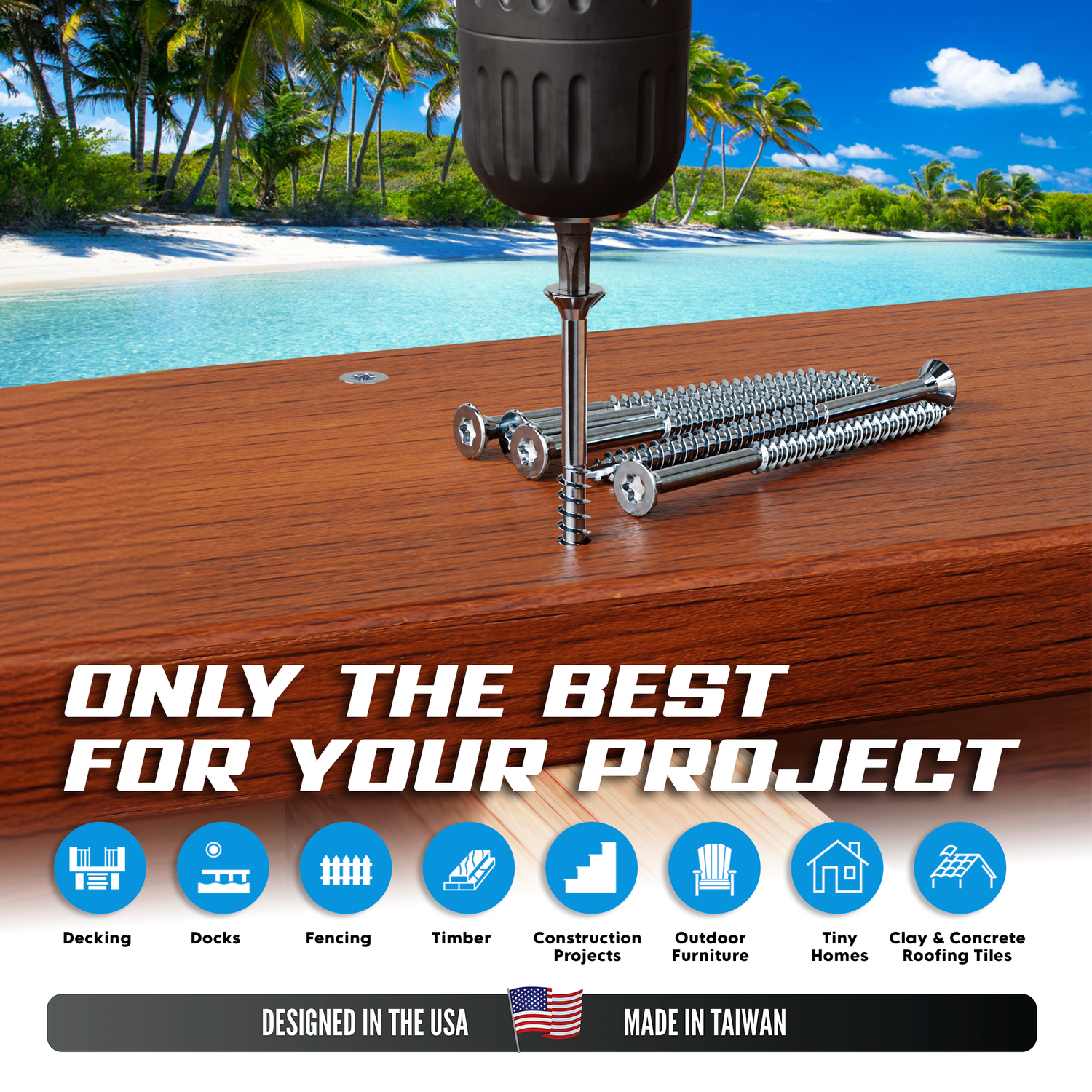
Using the Right Tools and Techniques for Screw Installation
Share
A Guide to Using the Right Tools and Techniques for Screw Installation

Selecting the Right Screw for the Job:
Before diving into installation techniques, it's essential to choose the right screw for your project. Consider factors such as material, application, and environmental conditions. Stainless steel screws, such as those offered by Allen's Trading Co., are a durable and corrosion-resistant choice, suitable for a wide range of DIY applications. Apart from the correct material, length is your most important consideration. Our rule of thumb is for the screw length to be three times the thickness of the material being fastened.
Essential Tools for Screw Installation:

- Cordless Drill: A versatile tool for driving screws efficiently. Adjust the torque settings to prevent overtightening, especially in softer materials. A cordless drill with torque setting adjustment is ideally suited for precision work.
- Impact Driver: Ideal for driving screws quickly and with more force. An impact driver is excellent for larger construction projects or when working with hardwoods.
- Screwdriver Set: These sure still have a place in your toolbox! For manual screw installation or precision work, a quality screwdriver set is indispensable. Match the screwdriver type to the screw head for a secure fit.
- Clamps: Secure the materials in place before screwing to ensure precision and prevent movement during installation.
- Level, Square and straight: Keep a quality spirit level and a carpenter square close at hand to maintain the highest standards of work with ease, resulting in quality from start to finish. A gut line or chalk line is indispensable for setting longs runs of screws perfectly straight. Get the laws of physics onto your team!
- Drills and countersinks: Depending on the material, use a drill bit or screwdriver to create clearance and pilot holes, especially in hardwoods or dense materials. A good quality countersink helps set screws at consistent depth, adding to structural integrity and visual appeal.
Techniques for Successful Screw Installation:
Pilot Holes: Especially in hardwoods, always drill pilot holes, matching the size to the screw. This prevents splitting and ensures a smoother installation. A general guide is for a clearance hole to be drilled in the material being attached, and a pilot hole in the frame or substructure it is being fixed to. Combination bits that do all in one are available.
Countersinking: For a professional finish, countersink the screw heads so they sit flush with the surface. This is particularly important in visible areas.
Preventing Overtightening: Use torque settings on power tools to prevent overtightening, which can damage the material or strip the screw.
Choosing the Right Screwdriver: Ensure the screwdriver matches the screw head. A mismatch can lead to slippage and damage the screw or the surrounding material, apart from increasing the risk of injury.
Using Anchors: In situations where screws are installed in drywall or other fragile materials, use anchors to provide additional support.
Why Quality Matters:
Investing in high-quality screws, such as stainless steel options from Allen's Trading Co. Eagle Claw Fasteners, ensures a secure and long-lasting installation. The right tools and techniques, combined with quality materials, contribute to the success of any DIY project.
Conclusion:
Your DIY Success Starts with Quality Tools and Techniques
As you dive into your next DIY project, remember that the success of your endeavor lies in the details. From selecting the right screw to using the appropriate tools and techniques, each step contributes to the overall quality of your work. Explore our range of Eagle Claw Fasteners stainless steel screws—because when it comes to DIY, quality tools and materials make all the difference.
Master your craft. Choose quality. Choose Allen's Trading Co. Eagle Claw Fasteners.


